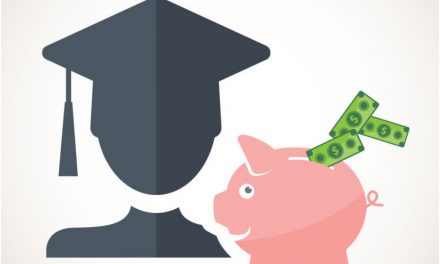
Ways to Manage and Reduce Student Debt
There are six primary ways college graduates can manage their student debt, from outright forgiveness to refinancing.
To view the full article please register below:
Ways to Manage and Reduce Student Debt
Student debt hit a new high in 2019, reaching a massive $1.5 trillion owed by 44 million borrowers.1 This debt represents a heavy individual burden and has extracted a high economic toll, with excessive student loan debt soaking up a disproportionate share of income for an entire generation of consumers.
Six Student Debt Management Strategies
There are six primary ways college graduates can manage their student debt, from outright forgiveness to refinancing.
- Consolidate and Refinance at a Lower Rate—Refinancing may not reduce debt levels, but it can improve an individual’s cash flow by reducing payments through a lower interest rate. Borrowers should recognize that if the loan’s term is extended, it could end up costing more in interest over the loan’s life despite the lower rate. (Note: Replacing a federal loan with a private loan will forfeit the ability to tap income-based repayment programs.)
- Income-Based Repayment Program—This option is only available for federal loans taken out by the student. An Income-Based Replacement Program (IBRP) ties the loan payments to the individual’s discretionary income rather than the loan amount. If the loan was made after June 30, 2014, the monthly payment will not exceed 10 percent of the individual’s discretionary income (15 percent of income on loans prior to July 1, 2014).
Loan balances remaining at the end of the term will be forgiven after 20 years for loans after June 30, 2014, and after 25 years for loans made before July 1, 2014.
Pay as You Earn (PAYE) and the Revised Pay as You Earn (REPAYE), the latter of which offers interest subsidy in certain cases, are comparable programs with slightly different provisions.
There are some drawbacks, including annual recalculation of the monthly payment, which will rise with salary increases; income recertification every year; forgiven loan balances, which are deemed taxable income; and interest costs may be higher since such repayment plans tend to last longer than a standard 10-year repayment plan.
- Income-Contingent Repayment Program—Similar to the IBRP, an Income-Contingent Repayment Program (ICRP) allows borrowers to pay the lesser of 20% of their discretionary income or the payment on a fixed plan over 12 years. Repayment can be spread over 25 years.
- Public Service Loan Forgiveness—Borrowers may qualify for complete, unlimited loan forgiveness after 120 payments instead of the 20-25 year periods discussed above. To qualify, individuals must work full-time for a government organization at any level, a tax-exempt 501(c)(3) organization, or a not-for-profit organization that provides qualifying public services. Loan forgiveness under this program is not considered taxable income.
- The Teacher Loan Forgiveness Program—This program provides qualifying teachers with principal reductions of $5,000 to $17,500 on their loans, and full forgiveness after 10 years. In order to be considered for this program, federal loans must have originated after October 1, 1998, been obtained prior to completing five years as a teacher, and the loan cannot be in default.
Borrowers, though, shouldn’t count too heavily on loan forgiveness. Of the 41,000-plus borrowers who have applied for public service loan forgiveness, only about 200 have received loan forgiveness.1
Source:
- https://www.forbes.com/sites/zackfriedman/2019/02/25/student-loan-debt-statistics-2019/#44b5d95d133f
See referenced disclosure (2) (3) and (4) at https://blog-dev.americanportfolios.com/disclosures/












